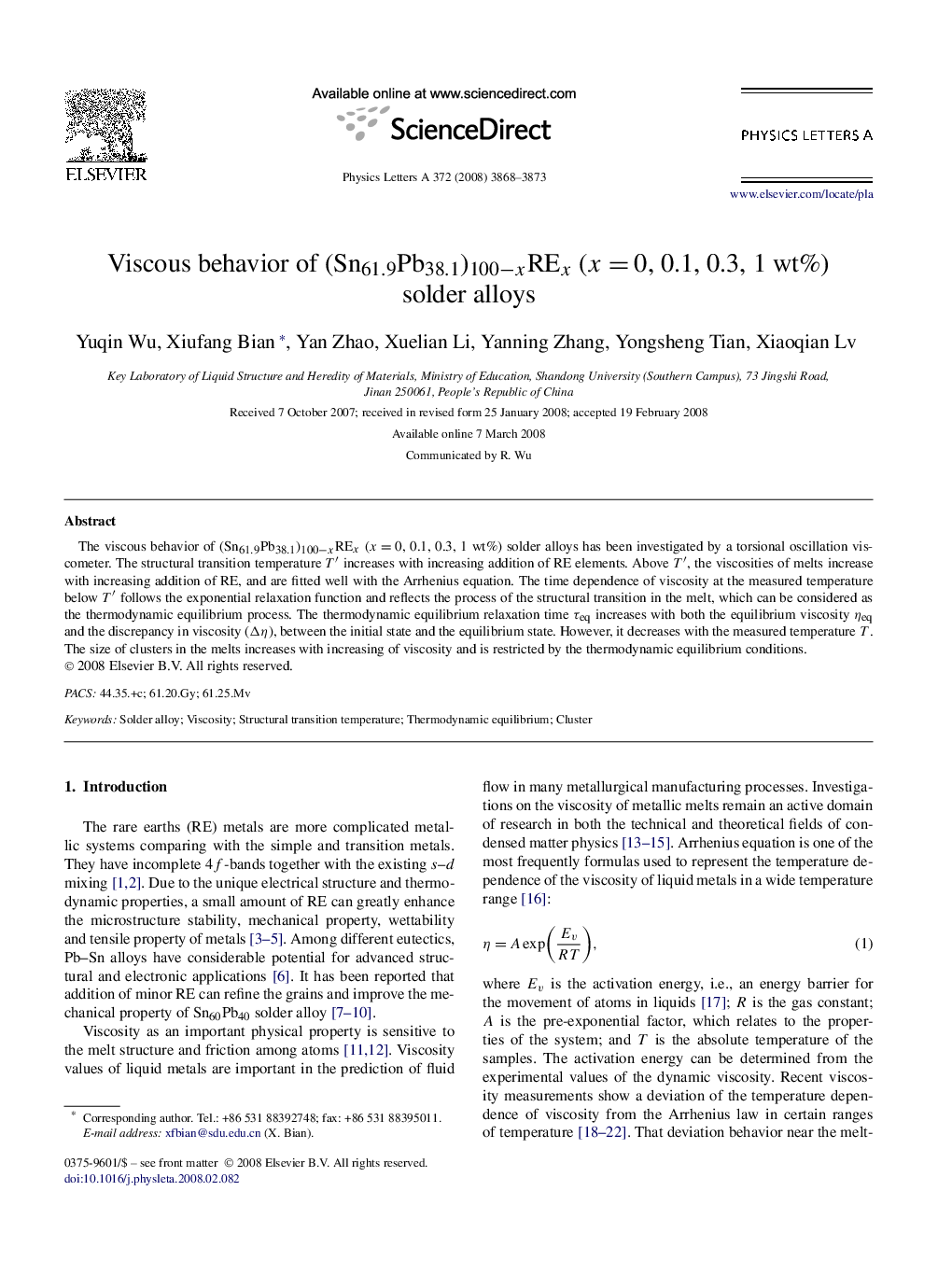| Article ID | Journal | Published Year | Pages | File Type |
|---|---|---|---|---|
| 1864657 | Physics Letters A | 2008 | 6 Pages |
The viscous behavior of (Sn61.9Pb38.1)100−xREx (x=0x=0, 0.1, 0.3, 1 wt%) solder alloys has been investigated by a torsional oscillation viscometer. The structural transition temperature T′T′ increases with increasing addition of RE elements. Above T′T′, the viscosities of melts increase with increasing addition of RE, and are fitted well with the Arrhenius equation. The time dependence of viscosity at the measured temperature below T′T′ follows the exponential relaxation function and reflects the process of the structural transition in the melt, which can be considered as the thermodynamic equilibrium process. The thermodynamic equilibrium relaxation time τeqτeq increases with both the equilibrium viscosity ηeqηeq and the discrepancy in viscosity (Δη), between the initial state and the equilibrium state. However, it decreases with the measured temperature T. The size of clusters in the melts increases with increasing of viscosity and is restricted by the thermodynamic equilibrium conditions.
